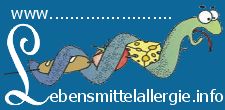14.04.2006, 17:06
Anaphylaktische Reaktionen im Kindesalter werden vor allem durch Nahrungsmittelallergene ausgelöst.
Von 103 Kindern reagierten 59 auf Nahrungsmittel
- 12 auf Erdnuss
- 12 auf Baumnuss ( Hasel, Mandel, Walnuss)
- 8 auf Kuhmilch und 8 auf Fisch
- 4 auf Hühnerei und 15 auf „Sonstiges“ ( wobei dieses „sonstige“ nicht näher definiert ist)
- 13 der Kinder reagierten auf Insektenstiche, 12 auf Hyposensibilisierung, 6 auf Arzneimittel und 13 auf „Unbekannt/Sonstiges“
Bei den Patienten kommt es nicht selten zu wiederholten Reaktionen. Die Notfallversorgung der Kinder ist uneinheitlich und häufig unzureichend.
( Allergo Journal 2006;15, S. 108 )
Sollte es Lesern, bzw. deren Angehörige so ergehen, sich bitte vom Arzt eine Notfallausrüstung verordnen lassen!
Ein Mittel der Wahl wäre z.B.
Anapen 150µg Inj.-Lsg.
Anapen 300µg Inj.-Lsg.
Epinephrin
Dr. Beckmann Pharma GmbH
<>Zusammensetzung: -150µg, -300µg Inj.-Lsg.: 1ml Inj.-Lsg. enth.: 0,5mg Epinephrin; 1 Dosis von 0,3ml enth. 150µg/300µg Epinephrin. Hilfsst.: Natriumchlorid, Natriummetabisulfit (E223), Salzsäure, Wasser f. Inj.-Zwecke.
http://www.gelbe-liste.de/db/db1.html
Uli
Anaphylactic reactions in children--a questionnaire-based survey in Germany.
Mehl A, Wahn U, Niggemann B.
Department of Pediatric Pneumology and Immunology, Charite- University Medical Center Berlin, Berlin, Germany.
BACKGROUND: Severe anaphylactic reactions are medical emergencies requiring immediate recognition and treatment. Despite this, little is known on their clinical features, especially in infants and children. OBJECTIVE: To evaluate trigger factors, patterns of clinical reaction, site of occurrence and treatment modalities of reported reaction in infants and children below 12 years of age in Germany.
METHODS: Paediatricians throughout Germany were asked by questionnaire to report accidental anaphylactic reactions over the previous 12 months. Severity of reported reactions was classified in grades I-IV according to reported symptoms.
RESULTS: Hundred and three cases of anaphylaxis were evaluated. Median age was 5 years, 58% were boys. Site of occurrence was the child's home in the majority of cases (58%). Foods were the most common causative allergen (57%), followed by insect stings (13%) and immunotherapy (SIT) (12%); in 8% anaphylactic agent was unknown. Among foods, peanuts and tree nuts were the most frequent allergens (20% of food allergens in each case). Severe reactions with cardiovascular involvement occurred in 24% of cases. No fatal reaction was observed. Recurrent episodes of anaphylaxis were reported in 27% of cases, half of these caused by the same allergen again. For treatment, 20% of children received adrenaline, in 8% of cases intravenously. Thirty-six per cent of patients with grade-IV reactions received adrenaline, 24% intravenously. In 17% of all children an adrenaline self-injector was prescribed after the episode. CONCLUSION: Our data: (i) shows an uncertainty of physicians in diagnosing anaphylaxis, (ii) reveals remarkable under-treatment of the majority of children with anaphylaxis, (iii) reflects the need for guidelines and training for physicians in managing children with anaphylaxis and (iv) should encourage the development of self-management programmes for patients and families.
http://www.ncbi.nlm.nih.gov/entrez/query...t=Abstract
Von 103 Kindern reagierten 59 auf Nahrungsmittel
- 12 auf Erdnuss
- 12 auf Baumnuss ( Hasel, Mandel, Walnuss)
- 8 auf Kuhmilch und 8 auf Fisch
- 4 auf Hühnerei und 15 auf „Sonstiges“ ( wobei dieses „sonstige“ nicht näher definiert ist)
- 13 der Kinder reagierten auf Insektenstiche, 12 auf Hyposensibilisierung, 6 auf Arzneimittel und 13 auf „Unbekannt/Sonstiges“
Bei den Patienten kommt es nicht selten zu wiederholten Reaktionen. Die Notfallversorgung der Kinder ist uneinheitlich und häufig unzureichend.
( Allergo Journal 2006;15, S. 108 )
Sollte es Lesern, bzw. deren Angehörige so ergehen, sich bitte vom Arzt eine Notfallausrüstung verordnen lassen!
Ein Mittel der Wahl wäre z.B.
Anapen 150µg Inj.-Lsg.
Anapen 300µg Inj.-Lsg.
Epinephrin
Dr. Beckmann Pharma GmbH
<>Zusammensetzung: -150µg, -300µg Inj.-Lsg.: 1ml Inj.-Lsg. enth.: 0,5mg Epinephrin; 1 Dosis von 0,3ml enth. 150µg/300µg Epinephrin. Hilfsst.: Natriumchlorid, Natriummetabisulfit (E223), Salzsäure, Wasser f. Inj.-Zwecke.
http://www.gelbe-liste.de/db/db1.html
Uli
Anaphylactic reactions in children--a questionnaire-based survey in Germany.
Mehl A, Wahn U, Niggemann B.
Department of Pediatric Pneumology and Immunology, Charite- University Medical Center Berlin, Berlin, Germany.
BACKGROUND: Severe anaphylactic reactions are medical emergencies requiring immediate recognition and treatment. Despite this, little is known on their clinical features, especially in infants and children. OBJECTIVE: To evaluate trigger factors, patterns of clinical reaction, site of occurrence and treatment modalities of reported reaction in infants and children below 12 years of age in Germany.
METHODS: Paediatricians throughout Germany were asked by questionnaire to report accidental anaphylactic reactions over the previous 12 months. Severity of reported reactions was classified in grades I-IV according to reported symptoms.
RESULTS: Hundred and three cases of anaphylaxis were evaluated. Median age was 5 years, 58% were boys. Site of occurrence was the child's home in the majority of cases (58%). Foods were the most common causative allergen (57%), followed by insect stings (13%) and immunotherapy (SIT) (12%); in 8% anaphylactic agent was unknown. Among foods, peanuts and tree nuts were the most frequent allergens (20% of food allergens in each case). Severe reactions with cardiovascular involvement occurred in 24% of cases. No fatal reaction was observed. Recurrent episodes of anaphylaxis were reported in 27% of cases, half of these caused by the same allergen again. For treatment, 20% of children received adrenaline, in 8% of cases intravenously. Thirty-six per cent of patients with grade-IV reactions received adrenaline, 24% intravenously. In 17% of all children an adrenaline self-injector was prescribed after the episode. CONCLUSION: Our data: (i) shows an uncertainty of physicians in diagnosing anaphylaxis, (ii) reveals remarkable under-treatment of the majority of children with anaphylaxis, (iii) reflects the need for guidelines and training for physicians in managing children with anaphylaxis and (iv) should encourage the development of self-management programmes for patients and families.
http://www.ncbi.nlm.nih.gov/entrez/query...t=Abstract





